PROGRAMME NOTES
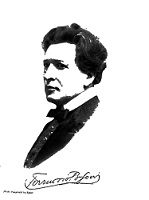 Bach/Busoni: Chaconne in D minor
Bach/Busoni: Chaconne in D minor
Bach’s Chaconne in D minor forms the concluding movement of his Solo Violin Partita No 2 (BMV 1004) and brings to perfection the great baroque tradition of violin-writing which included composers such as Arcangelo Corelli (1653-1713), Guiseppe Tartini (1612-1770) and Antonio Vivaldi (1678-1741) and inspired the great violin-makers Antonio Stradivari (1644-1737) and Guiseppe Guanari (1698-1744). Facing the daunting prospect of appropriating so hallowed a piece from the violin repertoire for pianistic usage, Busoni’s approach is understandably circumspect, and as respectful as it is adventurous. First he takes his lead from Bach’s own transcription for organ of his G minor fugue for the violin, and sketches an organ transcription of the Chaconne; he then employs his resplendent pianistic resources in transforming this imaginary organ transcription into a sumptuous concert version for the piano.
George Frederick Pinto: Sonata in A major op 3 no 2
George Frederick Pinto was a child prodigy on the violin and was playing concertos when ten years old. Then the piano became his favourite instrument and he proceeded to concertize on both, with resounding success. When barely sixteen he composed the two Piano Sonatas that comprise op 3, and until his untimely death at the age of twenty an impressive output of works tumbled from his pen.
The Sonata in A major is one of Pinto's most sunlit compositions. A timeless “stream-of-consciousness” style and beguiling modulations anticipate Schubert but there is no “borrowing” going on here: Schubert was but four years of age when this piece was written!
Schubert: Fantasy in C major: "Der Wanderer"
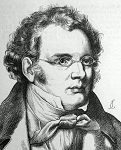 Schubert's Wanderer Fantasy displays a revolutionary concept in musical form, and a perusal of any page will show that the composer flung as great a challenge to the performer as to the theorist . The dactylic motif of the song Der Wanderer so pervades the Fantasy that it is difficult to say whether the piece is in four movements or just one, and this blurring of the boundaries between the large-scale four-movement plan consisting of first movement, slow movement, scherzo and finale, and the sonata-form sequence consisting of exposition, development, recapitulation and coda, gives the uncanny effect, in the case of the first and third 'movements', of sonata form within sonata form. The idea of an over-arching one-movement plan made possible by thematic transformation greatly influenced Liszt's use of form in his B minor Sonata, Piano Concertos and Symphonic Poems. It contains some of Schubert's most challenging and heroic piano-writing and a glance at the key sequence shows Schubert's famed modulatory gifts to be firing on all cylinders.
Schubert's Wanderer Fantasy displays a revolutionary concept in musical form, and a perusal of any page will show that the composer flung as great a challenge to the performer as to the theorist . The dactylic motif of the song Der Wanderer so pervades the Fantasy that it is difficult to say whether the piece is in four movements or just one, and this blurring of the boundaries between the large-scale four-movement plan consisting of first movement, slow movement, scherzo and finale, and the sonata-form sequence consisting of exposition, development, recapitulation and coda, gives the uncanny effect, in the case of the first and third 'movements', of sonata form within sonata form. The idea of an over-arching one-movement plan made possible by thematic transformation greatly influenced Liszt's use of form in his B minor Sonata, Piano Concertos and Symphonic Poems. It contains some of Schubert's most challenging and heroic piano-writing and a glance at the key sequence shows Schubert's famed modulatory gifts to be firing on all cylinders.
The Wanderer was hailed as a masterpiece when it appeared in 1823. True, it cannot lay claim to the charm of the Impromptus or the profundity of the last Sonatas, but as a virile, uncompromising exploration of musical form and the possibilities of the piano, it has had far-reaching effects on the development of both.
INTERVAL
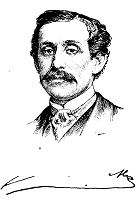 Gottschalk: Three Caprices
Gottschalk: Three Caprices
- Suis moi!
- O ma charmante, Epargnez moi!
- Ojos crillos (les yeux creoles), Danse Cubaine
The colourful and hugely talented American pianist and composer, Louis Moreau Gottschalk, studied in Paris. Here he met Chopin, who famously told him he would become the 'king of pianists'. Whether he actually achieved this lofty status is doubtful given his hedonistic lifestyle and insatiable appetite for the tropics which, while no doubt preventing his becoming such a polished technician as, say, Thalberg (see below), precipitated a veritable travelogue of exotic compositions. Fascinated by the music of his native New Orleans, in Bamboula: Danse de Negres Gottschalk anticipated jazz and ragtime by half a century. Writing in 1851, Hector Berlioz remarked:
“Mr Gottschalk was born in America, from where he has brought a curious collection of chants from the Creoles and Negroes; he has made from them themes of his most delicious compositions. Everyone in Europe now knows Bamboula, Le Bananier, Le Mancenillier, La Savane, and twenty other ingenious fantasies in which the nonchalant graces of tropical melody so assuage our restless and insatiable passion for novelty.”
Later he turned for inspiration to the West Indies. Ojos Criollos dates from 1859, O Ma Charmante and Suis Moi! from 1861. A note from the publisher (or, more likely, from Gottschalk) tells us:
“The Author in this morceau (which is entirely original) has endeavoured to convey an idea of the singular rhythm and charming character of the music which exists among the Creoles of the Spanish Antilles. Chopin, it is well known, transferred the national traits of Poland to his Mazurkas and Polonaises, and Mr Gottschalk has endeavoured to reproduce in works of an appropriate character the characteristic traits of the music of the West Indies.”
Alkan: Comme Le Vent
Sorabji's complaint that "most people think of Alkan as the composer of Le Vent" seems strange today. Alkan has been rescued from obscurity, but Le Vent is rarely heard. And doesn't it have a similar ring to Berlioz' sentence (quoted above) beginning “Everybody in Europe now knows...” ? One wonders which pieces popular today will need need rescuing from obscurity in a few years' time?
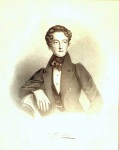 Thalberg: Fantasy on Rossini's Moses in Egypt
Thalberg: Fantasy on Rossini's Moses in Egypt
Sigismond Thalberg was born in Geneva in 1812. He is said to have been the illegitimate son of Count Moritz von Dietrichstein and Baroness von Wetzlar, who gave him his name and his life's mission at one stroke: Thalberg… to be as deep as the valley (Thal - ) and lofty as the mountain ( - berg). His destiny was to become touted as Liszt’s main pianistic rival but there was much more to Thalberg than that. His trade-mark three-handed effect in which the melody alternates between hands at the centre of the keyboard, with clever pedalling enabling each free hand to add swirling decorations above and below the theme, was so brilliant and sonorous that his audiences would stand on their seats to try and figure out how it was done. He was the first great pianist to tour the United States, where his coolness and pin-point accuracy and in the face of massive technical difficulties (he would smoke a Turkish pipe while practising in order to eliminate unnecessary movement) made an indelible imprint on the collective American pianistic psyche. He played several two-piano works with Gottschalk which created an overwhelming effect.
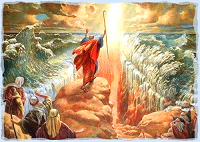 Unfortunately Thalberg allowed himself to become type-cast. He employed his three-handed effect so often that he became known as “Old Arpeggio” and fellow pianists were not slow to catch on. Eventually he stopped composing, complaining that “Alas, my imitators have made me impossible.” Actually, this was a bit rich. His operatic paraphrases had become so similar in style, structure and even length that heard in succession they can induce an overwhelming sense of déjà vue. Yet he was a legendary performer who left a sparkling and highly personal contribution to the noble art of the piano transcription.
Unfortunately Thalberg allowed himself to become type-cast. He employed his three-handed effect so often that he became known as “Old Arpeggio” and fellow pianists were not slow to catch on. Eventually he stopped composing, complaining that “Alas, my imitators have made me impossible.” Actually, this was a bit rich. His operatic paraphrases had become so similar in style, structure and even length that heard in succession they can induce an overwhelming sense of déjà vue. Yet he was a legendary performer who left a sparkling and highly personal contribution to the noble art of the piano transcription.
(1829-1869)
(1797-1828)
(1812-1871)
(1866-1924)